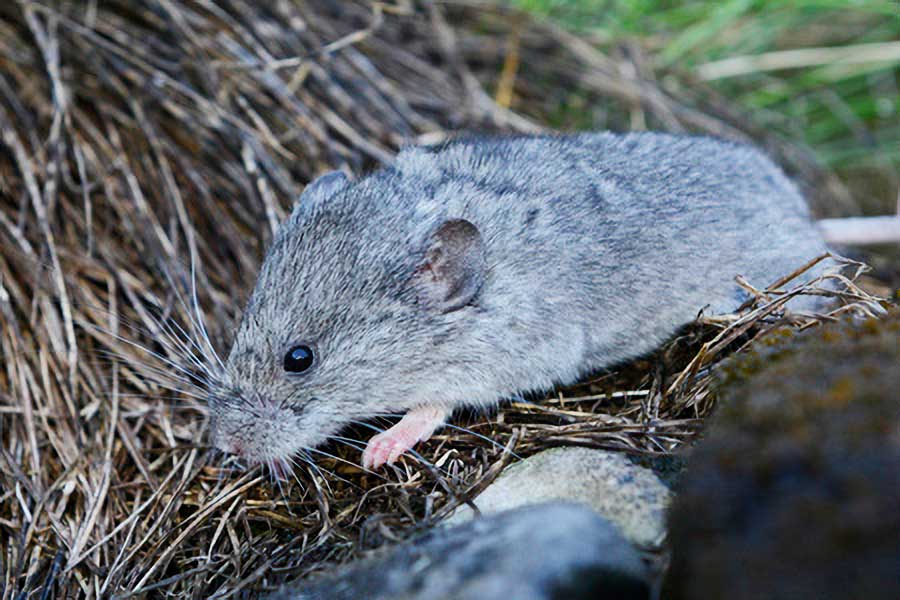
Bosnia & Herzegovina

Martino’s Snow Vole habitat, Mt Zelengora
In September 2014 I visited Podgorica, Montenegro for work. Though Montenegro is a country well worth exploring in itself, I couldn’t resist the siren call of a new genus and decided to spend my free evening next door in Bosnia – the republic of Srpska to be precise – trying to catch a Martino’s Snow Vole (Dinaromys bogdanovi).
Dinaromys is an interesting species. First discovered in 1922, they are known from only a few scattered localities in the former Yugoslavia and are the sole surviving member of an ancient lineage of mammals. They’d be an extremely difficult species to run into so I’d written to Professor Boris Krystufek, in Slovenia, the world’s foremost experts on the species and also an exceptionally generous and helpful source of advice. He recommended a few sites, the most convenient of which was just outside Mount Zelengora National Park, between Gacko and Foca, a 3 hour drive from Podgorica.
A Montenegran buddy of mine, Sasa Popovic , offered to come with me which was great. Not only is he very good company, but I think I would have struggled to have found the right area on my own. So the two of us, and 50 Sherman traps, set off one wet afternoon.
Boris had caught the voles mainly at the bottom of dolomines, odd looking limestone sinkholes that the voles inhabit, possibly because the deep fissures running underground provide a cool draft in the summer.
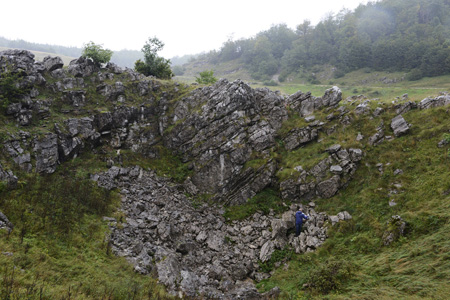
A dolomine: prime Dinaromys real estate (Picture Sasa Popovic)
Sasa and I set the traps and retreated to the Hotel Mladost n in nearby Sujetska National Park. It’s a beautiful region – the park reminded me of Vietnam: limestone peaks covered in forest and low hanging cloud

Sujetska National Park
At dawn the next morning we had caught one – and only one – Martino’s Snow Vole. A beautiful rodent, and extremely cooperative. It sat for fully 5 minutes feeding on the rocks after we released it.
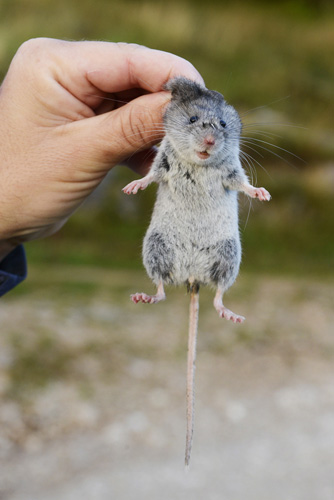

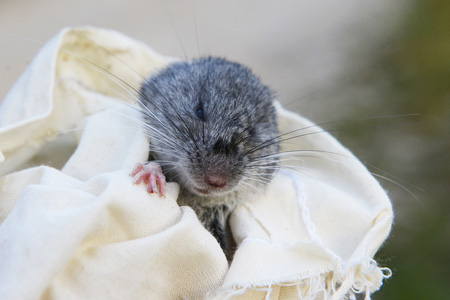
Martino’s Snow Vole (Picture Sasa Popovic)
Other than the dinaromys, I caught a few Yellow-necked Mice and a Mediterranean Field Vole. Boris told me there were also Alpine, Common and Pygmy Shrews, Pine Voles, two Mole species as well as Edible Dormice and Blind Mole Rats.
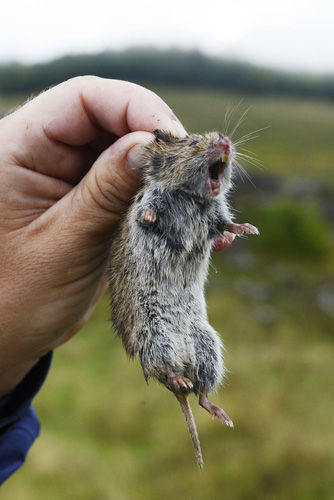
Mediterranean Field Vole, Microtus lavernedii (Picture Sasa Popovic)
A big thank you to Boris Krystufek and Sasa Popovic. More proof, if I needed any more, that people from the former Yugoslavia might be the friendliest on the planet.
Community Reports
Bosnia and Herzegovina, 2019: Mark Hows, 12 days & 25 species including Parti-coloured Bat, Wild Cat and Miller’s Water Shrew.
The Balkans, 2016 (and some flashbacks to the early 1990s): Vladimir Dinets, 6 weeks and 100+ mammals including Martino’s Snow Vole, Romanian Hamster, Western Broad-toothed Mouse, Bicoloured and Etruscan Shrews, a Mediterranean Monk Seal and European Polecat.
Also See
Please email me if you have tips for mammal watching in this area.


Leave a Reply
You must be logged in to post a comment.